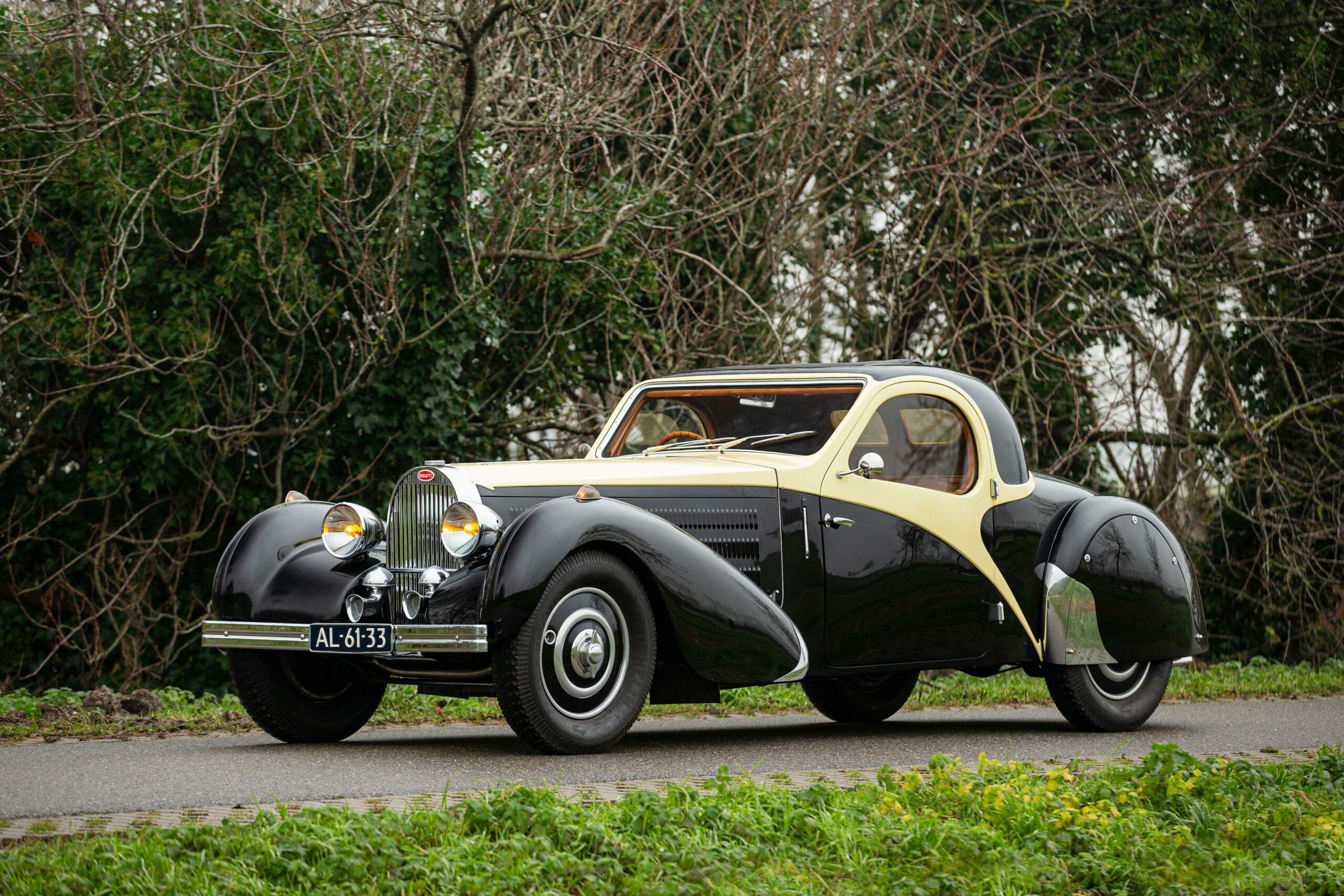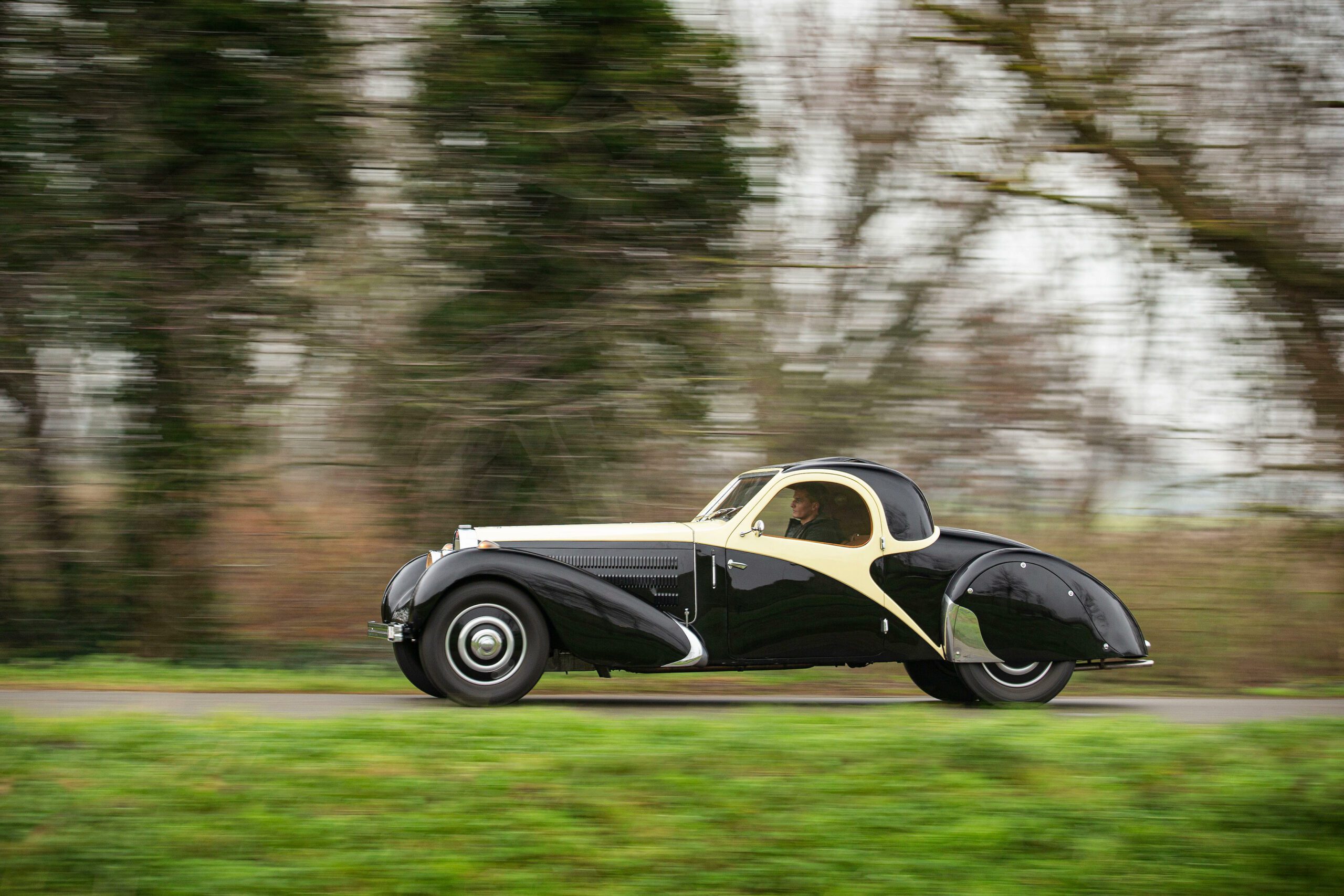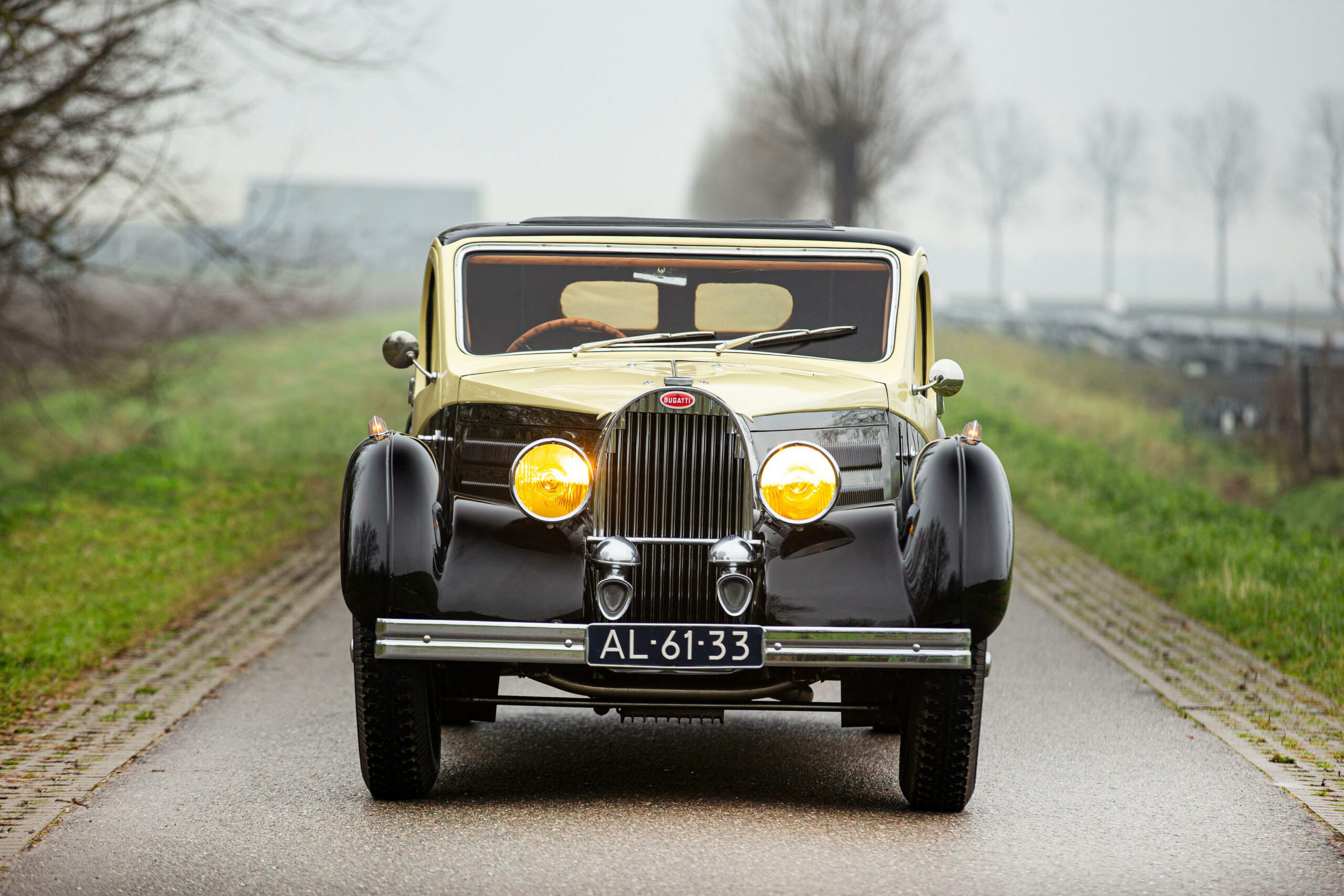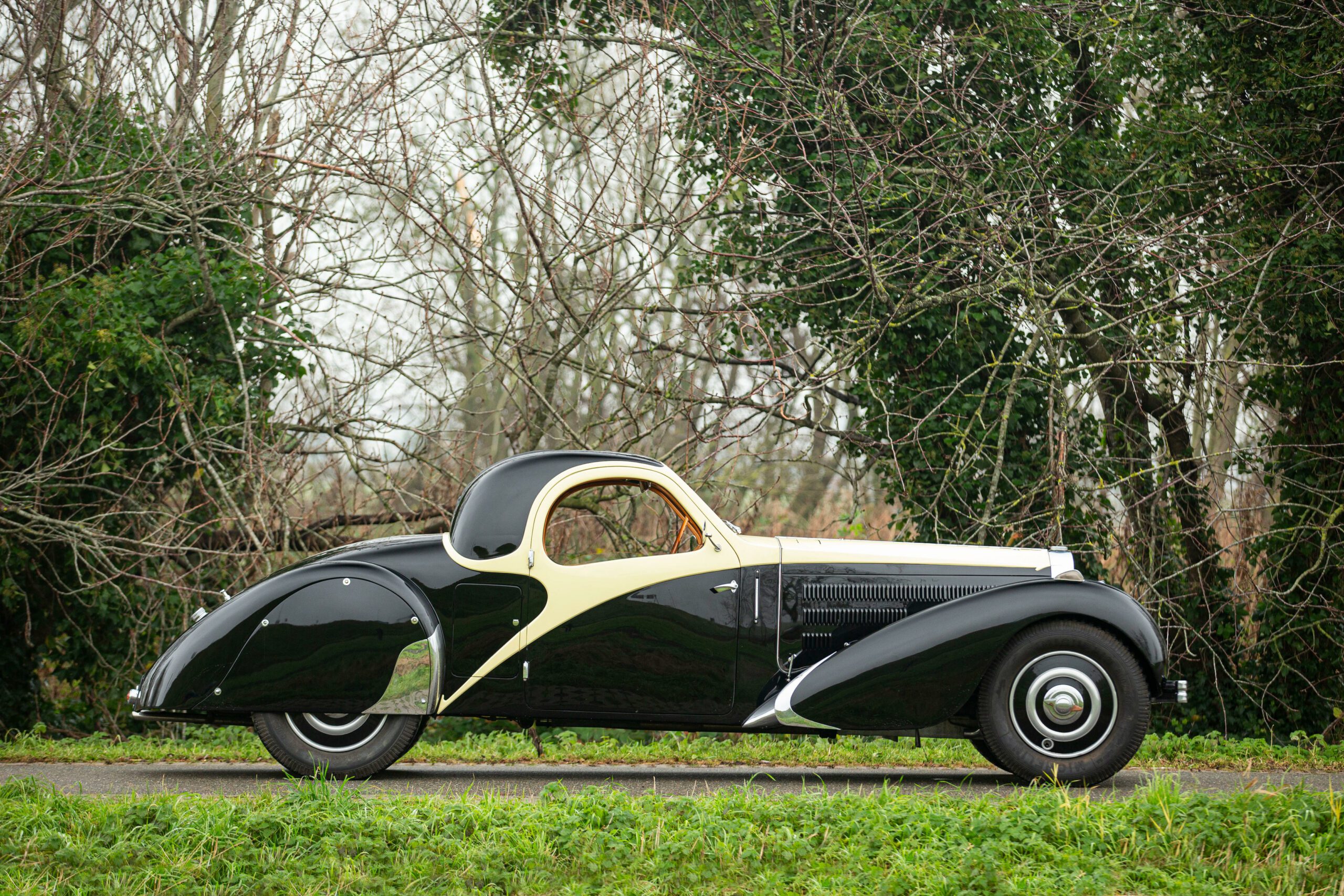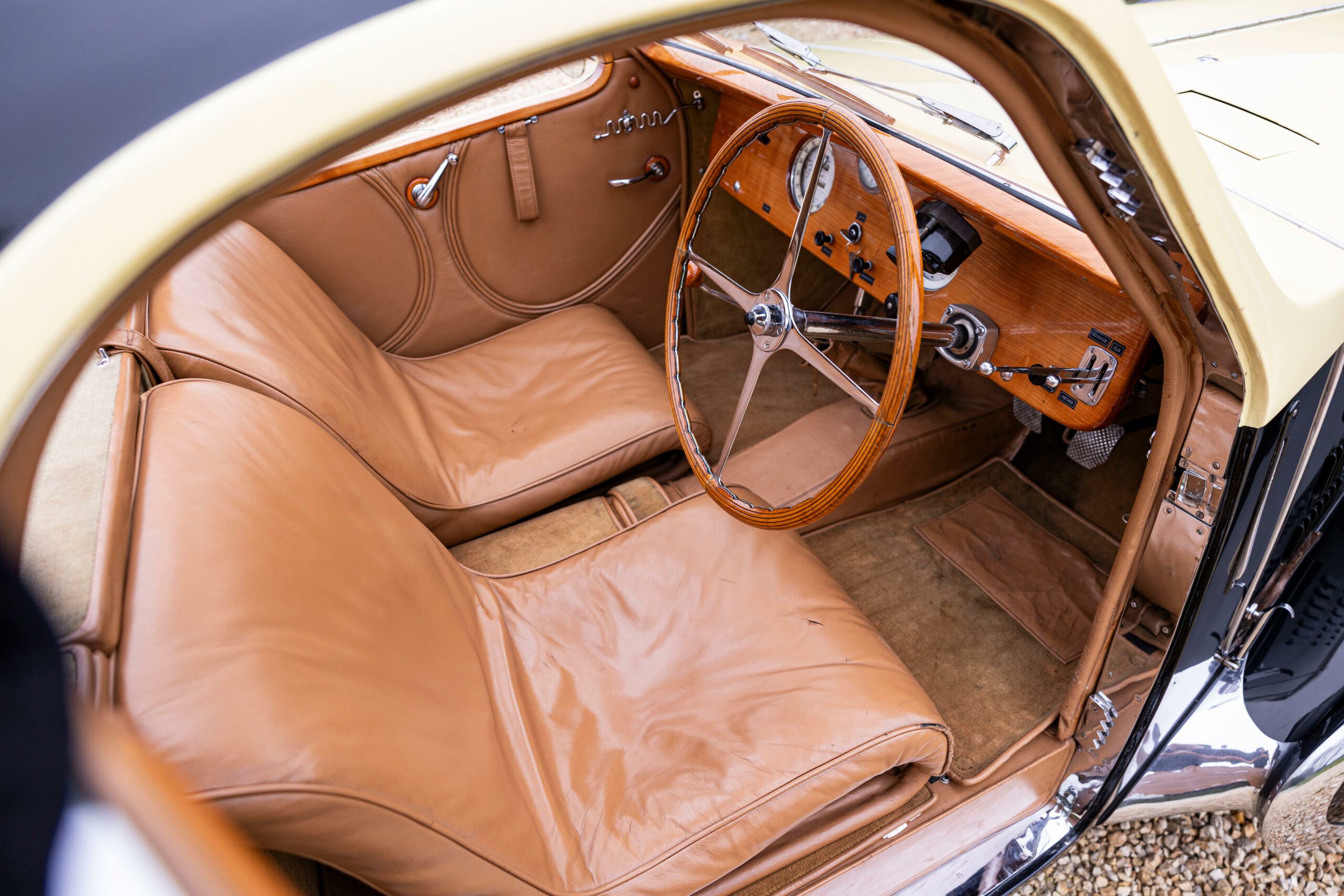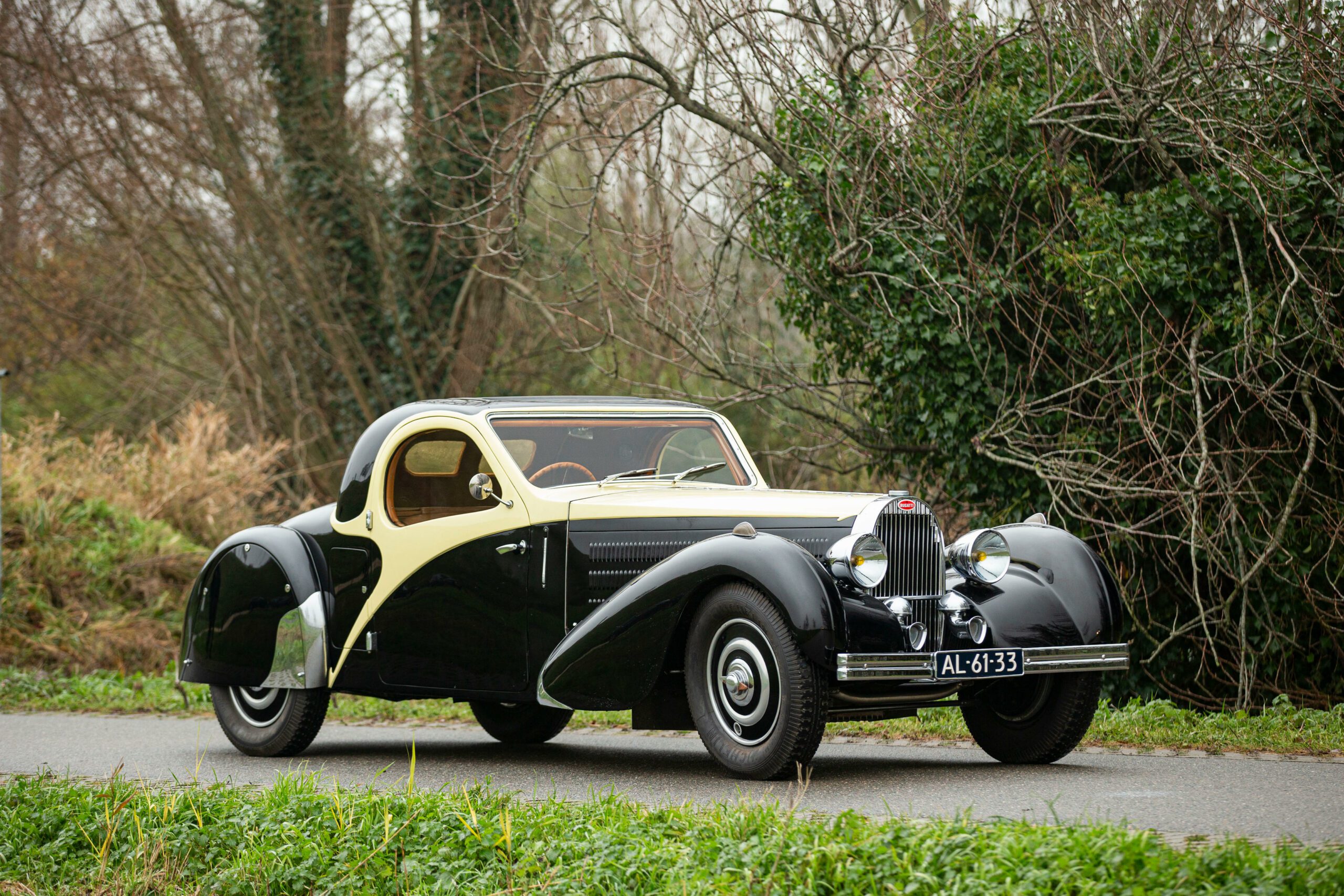In 1934, Bugatti unveiled the remarkable Type 57, a masterpiece that unknowingly marked the end of the marque’s exclusively French designs. Ettore Bugatti, the patriarchal leader, engrossed in creating petrol-powered rail cars for the French government, delegated the task of crafting the latest high-performance Gran Routier to his 23-year-old son, Jean. Alongside engineers Pichetto and Domboy, Jean meticulously formulated the car’s specifications, including the chassis, engine, and factory body designs.
The Type 57 boasted a groundbreaking twin-cam, inline eight-cylinder engine of 3,245cc, featuring a new block and crankcase design. Equipped with camshaft bevel gears, it delivered an impressive 135bhp in standard form. Although not officially a competition vehicle, it shared its core engine design with the Type 59 Grand Prix car, gaining popularity among rallyists. The chassis incorporated Bugatti’s proven solid front axle suspension, tuned for swift and luxurious touring. Jean Bugatti exhibited his design prowess with four in-house body styles: the Galibier saloon, Ventoux four-passenger coupe, Stelvio four-seat cabriolet, and the Atalante two-seat coupe.
Distinct from the renowned Atlantic Coupe, Jean Bugatti’s elegant two-place coupe, named after the Greek goddess Atalanta, featured factory design no. 1070. This masterpiece, built entirely in-house at Molsheim, stood on a 3.3 m wheelbase. Initially labeled “Faux Cabriolet,” the designation transitioned to Atalante from chassis 57330, displayed in October 1935, marking a significant chapter in Bugatti’s design legacy.
Source: Bonhams Cars





